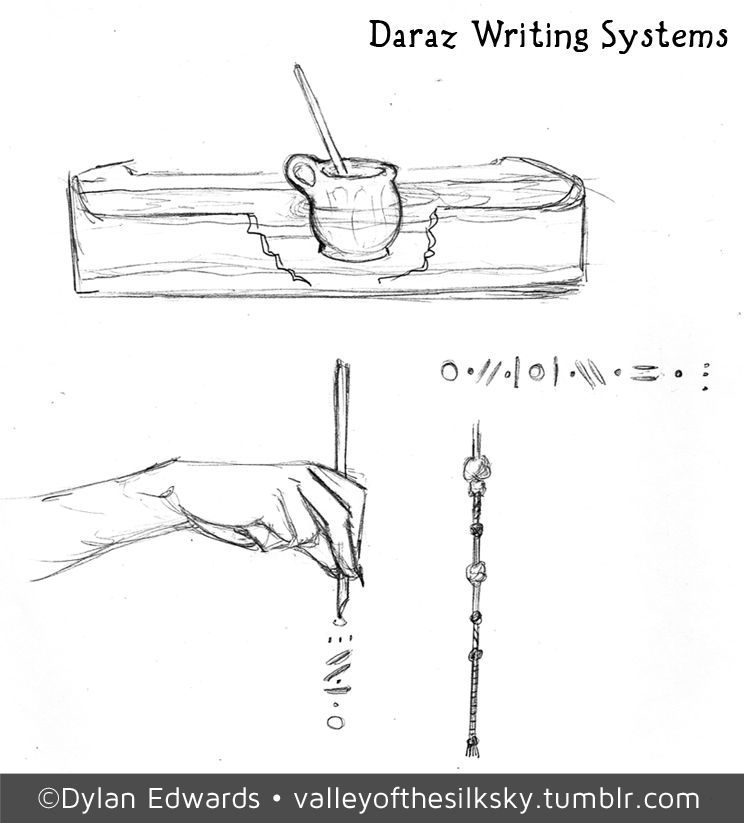
The Daraz have a tactile written language, since their infrared vision can’t detect ink on paper or print in a book.
They have two main systems of writing:
1. Cord notation: This format is similar to quipu, though the actual implementation is a little different. Size and distribution of knots, as well as weave of the cords, is used to convey information.
2. Wax notation: Knotting and weaving is a slow process, so the corded language is more for information that needs to be archived. These cords are typically transcribed from a writing system that uses a stylus to deposit dots and dashes of hot wax that mimic the knots and weaves of the cords.
The pot of wax is kept warm and liquid by storing it in a rivulet diverted from a hot spring. While it is still warm the wax is visible to the Daraz, so as they write with the stylus they have a visual impression of what they’re writing.
Once the wax cools and is no longer visible, they read the raised parts via touch.
This system is also useful for written communication with humans – while humans are not physically capable of speaking Rovari, they can certainly read it. Objects that might need to be read by both Daraz and humans, like containers of shared medicinals, will often be labeled in both Pocali and Rovari.
